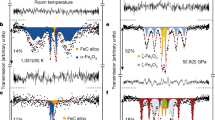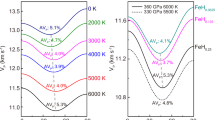Abstract
RYALL and Ade-Hall have shown experimentally1 that prolonged heating of pillow basalts in suitable conditions results in the exsolution of a ‘daughter’ phase from the host titanomagnetite. They suggest that in an applied field the daughter phase acquires a chemical remanent magnetisation (CRM) when it grows to the single domain size and that on cooling, the ‘mother’ or host phase is subjected to an interaction field from the daughter phase, which, they suggest, could outweigh the effect of the external field and result in a net reversed moment of the sample. They suggest that magnetostatic or possibly exchange interaction might be responsible.
This is a preview of subscription content, access via your institution
Access options
Subscribe to this journal
Receive 51 print issues and online access
$199.00 per year
only $3.90 per issue
Buy this article
- Purchase on Springer Link
- Instant access to full article PDF
Prices may be subject to local taxes which are calculated during checkout
Similar content being viewed by others
References
Ryall, P. J. C., and Ade-Hall, J. M., Nature, 257, 117–118 (1975).
Stephenson, A., Geophys. J. R. astr. Soc., 40, 29–36 (1975).
Stephenson, A., The Moon (in the press).
Runcorn, S. K., Nature, 253, 701–703 (1975).
Author information
Authors and Affiliations
Rights and permissions
About this article
Cite this article
STEPHENSON, A. Self reversal of thermoremanent magnetisation in basalts and global lunar magnetism. Nature 259, 101–102 (1976). https://doi.org/10.1038/259101a0
Received:
Accepted:
Issue Date:
DOI: https://doi.org/10.1038/259101a0
Comments
By submitting a comment you agree to abide by our Terms and Community Guidelines. If you find something abusive or that does not comply with our terms or guidelines please flag it as inappropriate.



